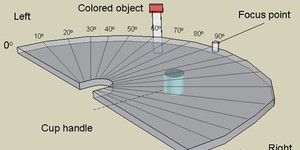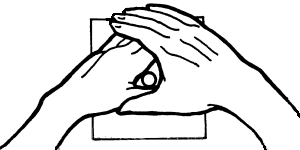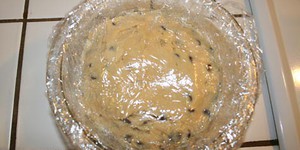Others Like “Now You See It, Now You Don't: Investigating Inattentional Blindness” (top 20 results)
|
Peripheral vision is important in our everyday lives because it allows us to gather a visual sense of our surroundings—without it, we would see the world through "tunnel vision." The survival of our ancient ancestors depended on their ability to use peripheral vision to find prey and to avoid predators. Almost everything we do—from riding a bike, to dribbling a basketball, to reading a book—depends on peripheral vision. In this human biology science fair project, you will test…
Read more
This project shows that our perceptions can change, even with the stimulus remains the same. A clear color difference in an image disappears after just 20 seconds of looking at another (special) image. Now you see it, now you don't!
Read more
If you have ever prepared a cup of coffee or tea with sugar, you have probably seen that the grains of sugar quickly dissolve and completely disappear in hot water. But sugar is not the only type of solid that can readily dissolve in a liquid. In fact, there are some types of rocks that can be dissolved by common liquids. It might be hard to imagine large, hard rocks being eaten away by some ordinary fluids, right? But it actually happens all the time! In this geology science project, you will…
Read more
Have you ever thought to yourself, "I have got to have that new video game right now?" Or maybe there's a new shirt at the store that you just have to have. So you rush home, break into your bank, and gather all of your money, even though you have been saving to buy your mom a gift. But wait! Maybe if you do a few more chores and save for just a few more days, you can gather enough money to buy your mom a gift and buy what you want. This behavior is called delayed gratification and it's what…
Read more
Did you know that our brains are split into two parts, right inside our head? One half is the left brain and the other half is the right brain. Some people use one half of the brain more than the other half when they are doing certain activities, like talking or reading. The half that is used is sometimes tied to which hand they prefer to use. If someone likes to use their right hand when doing an activity, like drawing or throwing a ball, do they also prefer to use their right ear, eye, or…
Read more
Everyone's used to the idea that people are either right-handed or left-handed for particular tasks. That is, one hand is preferred (or dominant) over the other for a particular task. Did you know that people also have a dominant eye? This project is designed to look for consequences of having the dominant hand and eye on the same side of the body (uncrossed) vs. having the dominant hand and eye on opposite sides of the body (crossed).
Read more
Baby Beluga may swim in the deep blue sea, but the song does not mention how cold it is out there! Find out in this science project how a bit of blubber can be a useful adaptation when the water is ice cold. Brrrr!
Read more
Have you ever bitten in to a cookie and thought, "this is the best cookie in the whole wide world!"? Was it one you made at home? In this science fair project, discover if you can perfect the taste of your favorite cookie right in your own kitchen!
Read more
Have you ever tried rubbing your stomach and patting your head at the same time? What about doing your homework or studying for your math test while watching television? It is tough to focus on a task when you are distracted doing something else, isn't it? In this science fair project, you will investigate how distractions affect your focus on a task, such as driving, by looking at how gaming scores are affected as you're talking on a cell phone or having a conversation with a friend.
Read more
How high can you throw different types of balls, like a golf ball, a basketball, and a football? Would one of them go higher than the others? Do factors like mass, shape, and volume influence the final height? You can measure the approximate maximum height a thrown ball reaches by measuring the time it spends in the air.
To do this project, you'll need at least one ball and a helper with a stopwatch. Your helper should start timing just as you release the ball, and stop right when the ball…
Read more
|
Explore Our Science Videos
Model How Herd Immunity Works
Build a Mini Rain Garden
Balloon car lesson plan











